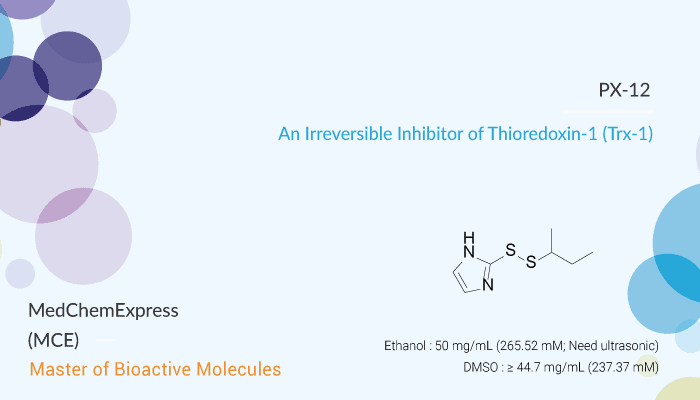Colorectal cancer is one of the leading causes of cancer-related mortality in most industrialized nations. It needs to find an effective adjuvant therapy for colorectal cancer. There includes non-steroidal anti-inflammatory drugs, immunotherapy, and gene therapy. Thioredoxin (Trx) and thioredoxin reductase 1 are among the major redox regulators in mammalian cells and control many cellular processes. Thioredoxin-1 (Trx-1) is a ubiquitously expressed low‑molecular-weight redox protein. It is overexpressed in several types of human cancers. It also has multiple effects on cells. Those effects include the transactivating activity of a number of redox-sensitive transcription factors and the regulation of DNA binding. Trx-1 also plays a critical role in a series of human diseases including cancer of the cervix, pancreas, lung, colorectal, and squamous cell cancer. The increased expression of Trx-1 in cancer cells may be an independent prognostic factor. In this study, PX-12 (IV-2) is an irreversible inhibitor of Trx-1.
PX-12 is an inhibitor of Trx-1 with antitumor activity.

PX-12 is a potent inhibitor of Trx-1 by irreversible thioalkylation of Cys73, causing inhibition of Trx-dependent cell growth. Hence, it inhibits colorectal cancer cell proliferation and colony formation. It also alters the cell cycle distribution and induces cell apoptosis in colorectal cancer cells. Moreover, PX-12 also inhibits colorectal cancer cell migration and invasion. It also decreases S100A4 protein expression in colorectal cancer cells. Furthermore, it decreases HIF-1alpha protein levels and the expression of downstream target genes. Meanwhile, PX-12 inhibits the growth of MCF-7 and HT-29 cells with IC50 values of 1.9 and 2.9 μM, respectively. In addition, it has in vivo antitumor activity against human tumor xenografts including HT-29 colon cancer in SCID mice.
In summary, PX-12 is a potent inhibitor of Trx-1, and it inhibits the growth, migration, and invasion of colorectal cancer cell lines.
Reference:
Welsh SJ, et al. Mol Cancer Ther. 2003 Mar;2(3):235-43.; Wang F, et al. Oncol Rep. 2015 Feb;33(2):967-73.